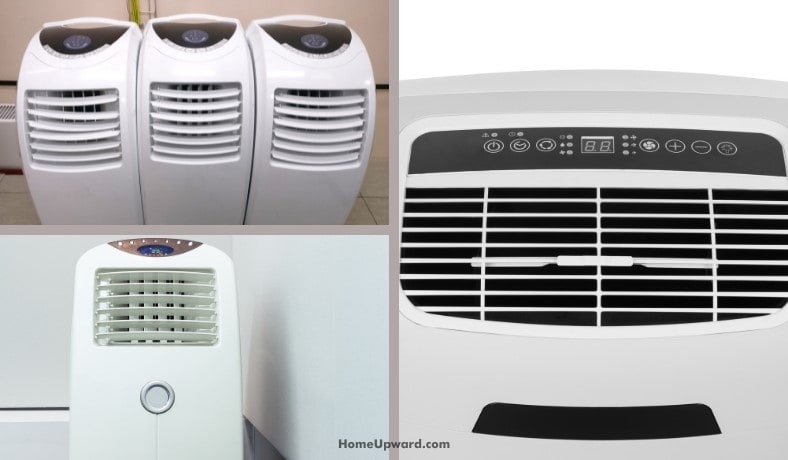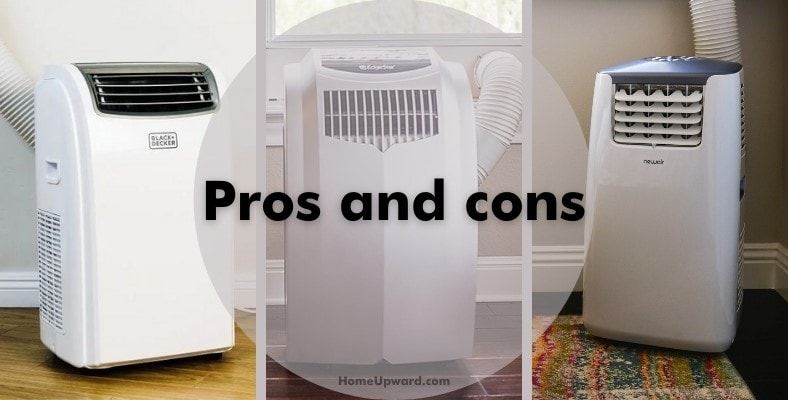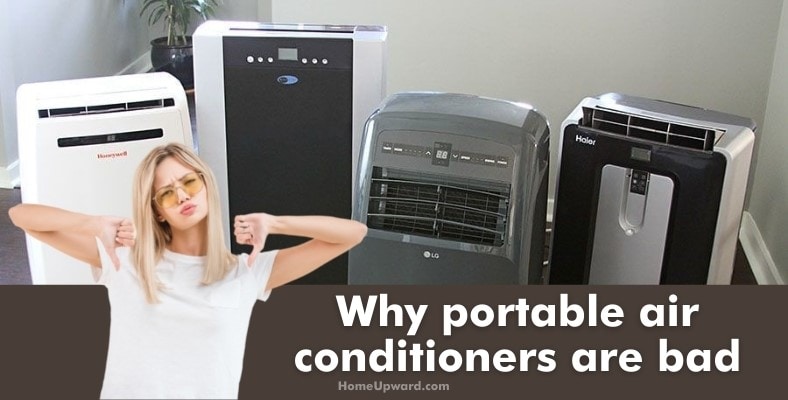Mobile air conditioners can be a super convenient way to cool your space. As the name suggests, these devices are portable, so you can move them from room to room with ease.
They’re a great alternative to more expensive central air conditioning systems that not everyone can afford. You could pick up a portable air conditioner for a couple of hundred dollars, although the price of larger, more sophisticated models can be upwards of $600.
Their efficiency can be measured in terms of transportability, size, cooling capacity and additional features such as a self-evaporative design.
Keep reading to find out more about mobile air conditioners.
Contents
What are the pros and cons of portable air conditioners?
There’s plenty of reasons why to purchase a mobile air conditioner, but there are also some disadvantages to consider.
Here are some of the pros and cons we thought you should know about:
Pros:
- Portable – move them between rooms in your house, so you don’t need to spend money on installing air conditioning in every room
- Easy to install – they can be easily placed in any room without special installation and can be moved without needing an extra person to help you
- Less expensive – portable air conditioners have been known to take up less electricity than other systems, especially central air conditioning systems
- Low-maintenance – lots of portable air conditioner models feature a self-evaporative design meaning it won’t require daily maintenance so, you don’t have to fiddle with draining etc. everyday
- Self-containing – don’t require specific installation like window air conditioners that need to be set up in a window frame in order to vent the device. Instead, they can be easily vented in tons of other ways such as into the ceiling or through a wall
Cons:
- Weight – while these systems are portable, some can weigh over 60 pounds so, lifting one by yourself can be a struggle, although lots of models will come with handy wheels to make movement easier
- Noise – like most machines, portable air conditioners are pretty noisy when turned on. Some can be as noisy as a dishwasher or possibly louder depending on the model/design
- Environmental impact – cooling agents used to cool the air are known to increase damage to the ozone layer over time. Plus, the plastic used to manufacture the machines is non-biodegradable
What should I look for when buying a portable air conditioner?
When it comes to purchasing a portable air conditioner, there are a couple of factors you should consider. We’ve compiled a list of the most important to help you through the process.
Portability
This may seem obvious, but it can be easy to be swayed by other features and forget all out the main purpose (besides cooling the air).
Some air conditioners require installation in a particular location such as a window. So, make sure you pick one that can be installed anywhere in your house.
These systems can also be pretty heavy, you’ll need to take that into account when measuring maneuverability.
Self-contained
This comes into portability too but, a self-contained air conditioner allows you to set them up anywhere without requiring ventilation like with window air conditioners.
Instead, they can be vented in plenty of places including through ceilings, walls, drying vents, and more.
Self-evaporative design
Not all portable air conditioners come with this feature, so keep an eye out for it in the product specifications. The self-evaporative design means you won’t have to worry about maintaining the system every day.
This feature means the machines are able to automatically evaporate the water they accumulate from dehumidifying the room. So, you don’t have to drain the tank every day.
Wheels
While the name suggests easy portability is guaranteed, these systems can be pretty heavy, and moving one from room to room can be tricky, especially if you don’t have help.
So, a wheeled model will be far easier to transport and save you struggling to lift and/or drag it on your own or wait for an extra person to help you. Being able to simply wheel the air conditioner around will be a massive time saver.
Size
Portable air conditioners come in lots of different shapes and sizes, so you need to make sure you pick one that fits in your home and will have the capacity to cool the room. Your average units are designed to be able to cool smaller rooms, about 500 sq.ft. in size, give or take.
You will need to throw a little more money at it if you want to cover a larger room, upwards of about 700 to 800 sq.ft.
Why portable air conditioners are bad
All air conditioners are complex and, like lots of machines, can have a negative impact on the planet. They utilize cooling agents such as CFCs and HFCs which contribute to damaging the ozone layer.
These systems also collect dust and bacteria over time which are released into your home each time you turn them on, if the ducts are not cleaned out often and can be toxic.
The materials used to design these machines can be harmful to the environment too. Lots will tend to be made from mainly plastic which is non-biodegradable. Plus, producing plastic releases carbon dioxide into the air.
Energy use is also a factor. Air conditioners take up lots of energy to function. For example, a typical air conditioner can consume up to 5000 watts of electricity per hour depending on how hot it is.
Basically, the warmer the air, the more power is needed to cool it. This is both bad for the environment and expensive to run.
All that being said, some people need portable air conditioners to live. Extremely hot temperatures can make it very difficult to live comfortably in your home and air conditioning systems are the only way to cool the air.
There are more environmentally friendly models available too which utilize better materials and are designed to release less greenhouse gases into the air.




